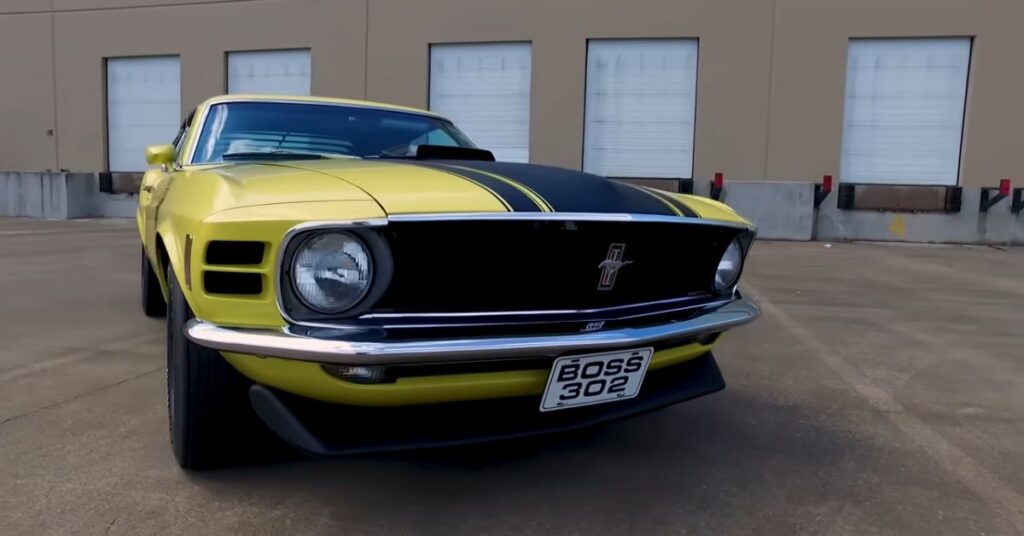The 1970 Ford Mustang Boss 302 is an iconic muscle car that holds a special place in automotive history. In this episode of Muscle Car of the Week, we delve into the features and legacy of this remarkable vehicle. From its Trans Am racing heritage to its powerful engine and unique design, the Boss 302 captivated the hearts of car enthusiasts back in 1970 and continues to do so today.
The Trans Am Racing Connection
The 1970 Ford Mustang Boss 302 owes its existence to the vibrant Trans Am racing scene of the time. To participate in Trans Am racing, automakers had to produce street-legal versions of their race cars. Ford answered the challenge by introducing the Boss 302, a high-performance Mustang built to dominate the track.
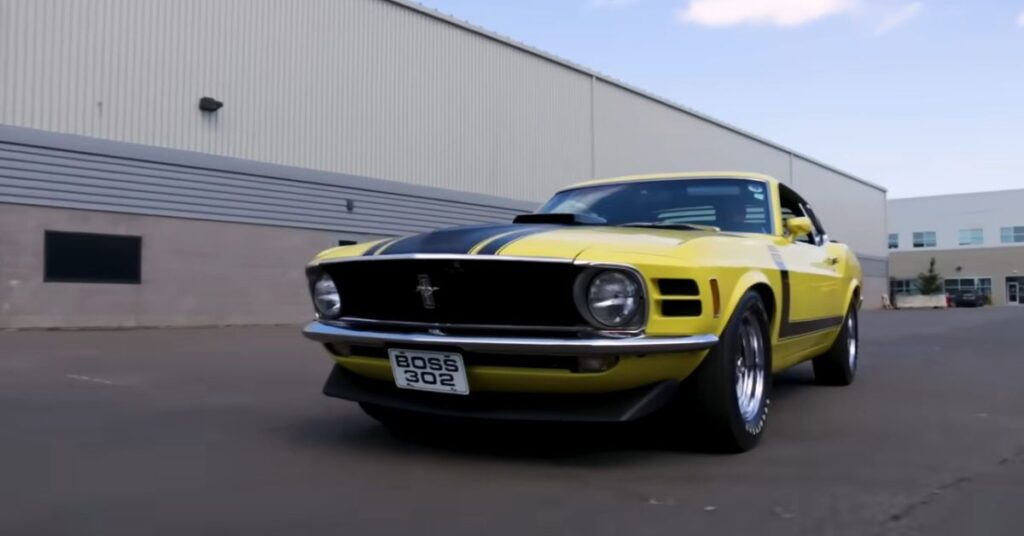
The Boss 302 was specifically designed to meet the rigorous demands of Trans Am racing. Its powerful engine, aerodynamic design, and performance-focused features set it apart from regular production Mustangs. Ford’s commitment to creating a formidable competitor led to the development of a car that not only satisfied the racing regulations but also captured the hearts of car enthusiasts. With its iconic status, the Boss 302 remains a symbol of power, speed, and the golden era of American muscle cars.
Design and Performance
The Boss 302 featured a bold and aggressive design, perfectly complementing its powerful performance. Its sleek lines, distinctive flat black Boss stripes, and functional shaker hood scoop exuded a sense of speed and power. These visual elements not only made the Boss 302 stand out on the road but also contributed to its aerodynamic performance. The lowered stance, sports slats, and rear spoiler enhanced its aerodynamic appeal, allowing the car to slice through the air with ease. Additionally, the front lower spoiler played a crucial role in improving stability at high speeds by preventing lift and maintaining optimal downforce.

The attention to detail in the Boss 302’s design was not just about aesthetics; it was a testament to its performance-oriented nature. Every element of its exterior was carefully crafted to enhance the car’s capabilities on the road and the track. From the aggressive front end to the purposeful rear spoiler, the Boss 302’s design was a statement of its intent—to deliver thrilling performance and an exhilarating driving experience.
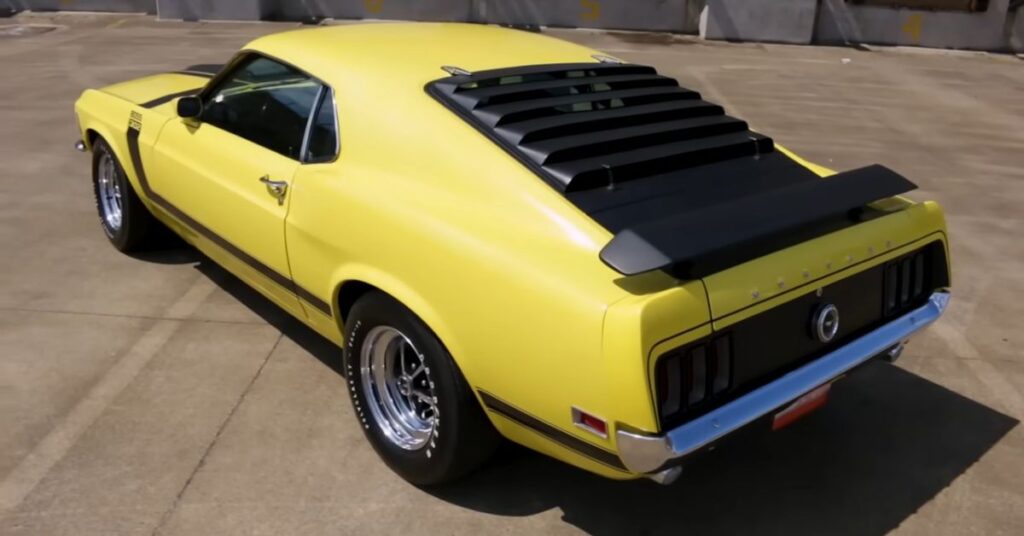
Overall, the Boss 302’s design was a harmonious blend of form and function. It not only turned heads with its aggressive appearance but also delivered the performance to match. The combination of aerodynamic enhancements and visual cues made the Boss 302 a true standout in the realm of American muscle cars.
The Legendary Boss 302 Engine
At the heart of the Boss 302 was its legendary engine. The 302 cubic inch V8 engine, featuring canted large valve Cleveland-style cylinder heads, delivered an advertised 290 horsepower and 290 pounds of torque. Built with a thin-wall 4-bolt main block, special balancer, and pulleys, the Boss 302 was designed for high RPM fun. Its 4150 Holley carburetor allowed for exceptional performance at high revs.
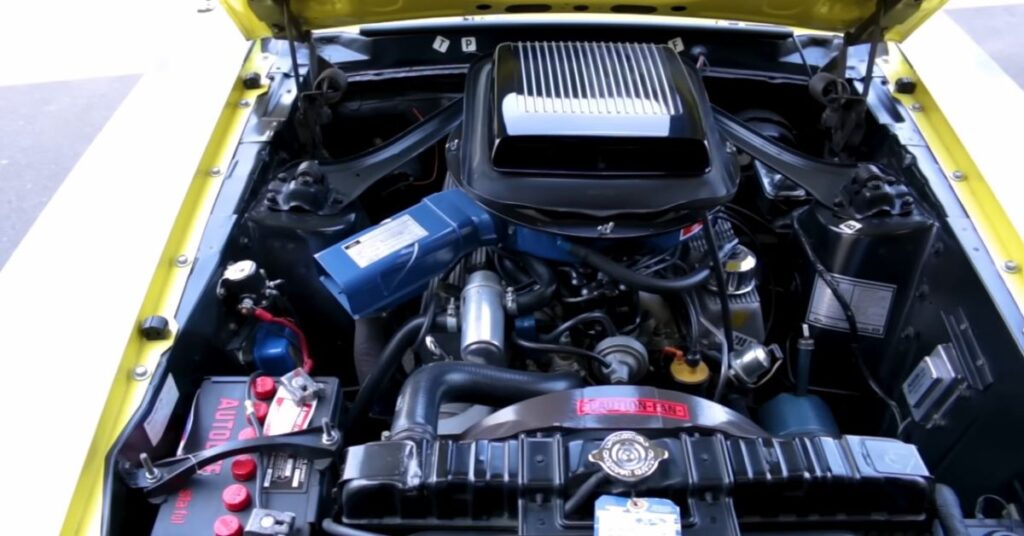
The Boss 302 was not just about raw power; it also boasted a range of road-ready features. The quick-ratio power steering and competition suspension ensured precise handling and responsiveness. Power front disc brakes provided excellent stopping power, while the oversized sway bar and specially tuned shock absorbers contributed to a smooth and controlled ride. The Detroit Locker rear differential added traction for spirited acceleration.
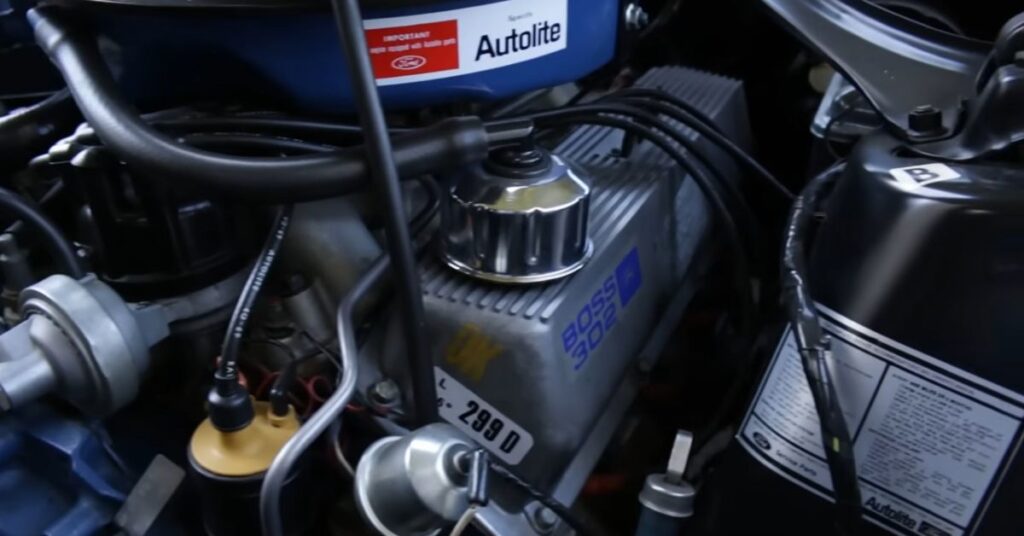
Comfort and Style Inside
Inside the Boss 302, drivers were treated to a combination of comfort and style. The high-back bucket seats provided excellent support during spirited driving, ensuring that drivers felt connected to the car at all times. These seats were designed to hold occupants firmly in place, even during aggressive maneuvers, enhancing both comfort and safety. The interior of the Boss 302 was thoughtfully designed with the driver in mind. The full instrumentation allowed drivers to keep a close eye on the car’s performance, providing vital information such as speed, RPM, and engine temperature. With this comprehensive set of gauges, drivers could monitor the car’s performance with precision and make informed decisions while behind the wheel.

Adding to the overall appeal of the interior, the Boss 302 offered additional features for a touch of luxury. The color-keyed carpeting added a stylish and coordinated look to the cabin, while the optional AM radio provided entertainment during long drives. Tinted glass not only enhanced the car’s aesthetics but also helped reduce glare and keep the interior cooler, ensuring a more comfortable driving experience. With its combination of comfort, style, and thoughtful features, the interior of the Boss 302 was designed to enhance the overall driving pleasure. Whether cruising on the open road or tackling challenging curves, the interior of the Boss 302 provided a comfortable and enjoyable environment for drivers to fully experience the thrill of this legendary muscle car.
Preserving the Legacy
With only 7,013 units produced in 1970, the Boss 302 remains a rare and sought-after collector’s item. Car enthusiasts and collectors recognize the significance of preserving the legacy of this iconic muscle car. Through meticulous restoration and ongoing care, many Boss 302s continue to dazzle car show attendees and evoke nostalgia for the golden era of American muscle.
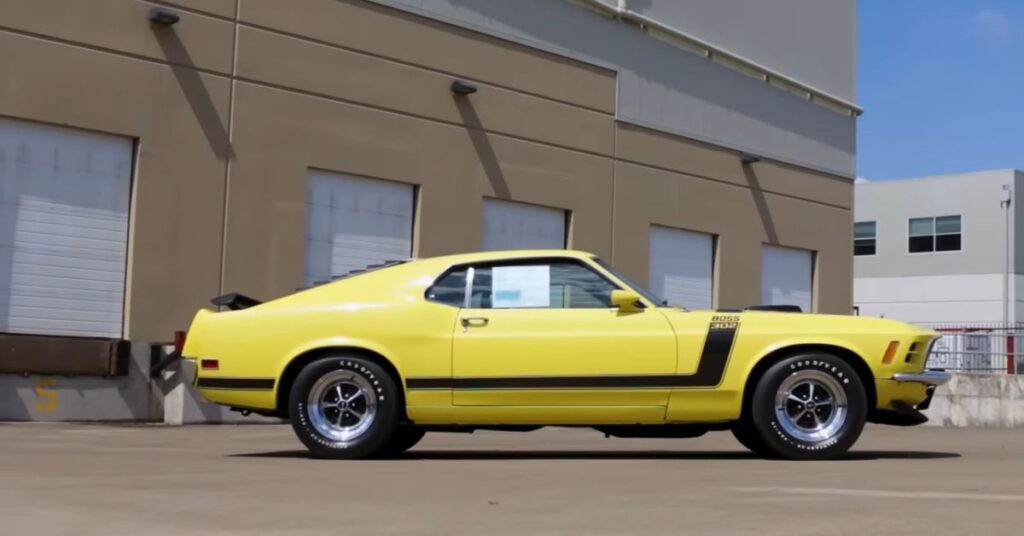
Today, the Boss 302 holds a special place in the hearts of Mustang enthusiasts and collectors worldwide. Its timeless design and remarkable performance continue to captivate audiences. Whether displayed at car shows or driven on the open road, the Boss 302 represents the pinnacle of American automotive engineering.
Conclusion
The 1970 Ford Mustang Boss 302 is a true legend in the realm of American muscle cars. Its connection to Trans Am racing, powerful engine, and aggressive design make it a standout vehicle from the golden era of automotive history. As enthusiasts continue to appreciate and preserve the Boss 302, its legacy lives on as a symbol of power, speed, and timeless style.
